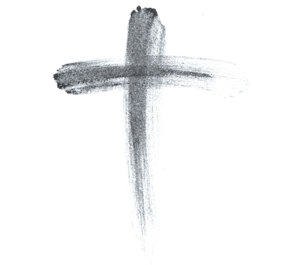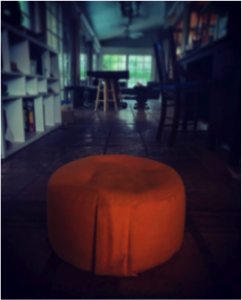 As we curate life from the food in our atmospheres…
As we curate life from the food in our atmospheres…
Earlier in Lent, I set the stage for one of the greatest rites of Jesus’ initiation—the Transfiguration—by mentioning the gospel which is probably one of the better known photographs of Jesus’ life. Jesus foretells his death and resurrection to his disciples. Explaining to them how he will have to undergo great suffering, and be rejected by the elders, the chief priests, and the scribes, and by everyone who is anyone, and be killed and then raised from the dead.
And Peter, being Peter, pulls Jesus aside in utter disgust and rebukes him. You have to always wonder from what plane Peter was seeing. And then there’s the moment. Jesus pulling back from Peter. I imagine some prolonged silence. Silence. Eyes darting around. And Jesus turns to the other disciples, which means turning his back on Peter, and yells, “Get behind me Satan! For you are putting your mind (your mind) not on divine things but on human things.”
It’s quite a rebuke. Imagine being on the receiving end of those words. Which leads me to believe that Jesus knew full well the failure of Peter’s vision and as any Wisdom teacher would do, turns his mistake into one of the most famous and beautiful teaching moments of his earthly life. Peter serves here, as he often does, as the archetype for those of us who cannot see with the eye of the heart—with our totality. Jesus goes on to boldly say this, “If any want to become my followers, let them deny themselves and take up their cross and follow me. For those who want to save their life will lose it, and those who want to lose their life for my sake, will save it. Those who are ashamed of me and of my words in this adulterous and sinful generation, of them the Son of Man will also be ashamed.”
 For those who want to save their life will lose it, and those who want to lose their life will save it. Objects in the mirror are closer than they appear.
For those who want to save their life will lose it, and those who want to lose their life will save it. Objects in the mirror are closer than they appear.
In one way or another, often verbatim, this line appears twice in Matthew’s gospel, once in Luke and John, but a corollary to this scripture that perhaps brings it home even more viscerally is found in the Gospel of Thomas, logion 70, where Jesus says this:
“When you give birth to that which is within yourself; what you bring forth will save you. If you possess nothing within, that absence will destroy you.”
I talk a lot about the tendency of the human condition to domesticate the gospel. To tame it. But there’s no taming of The Way of Jesus in today’s scripture and the work, the deep inner work, we must do if we want to truly live our lives in alignment with God instead of sabotaging ourselves to death. That’s the choice and the wager in today’s reading. If we want to save our lives, we must lose them. But the other choice is always there as well, as Peter’s reaction illustrates—we can choose to not lose our lives and stay in the adulterous and sinful world—that is a world steeped in self-separation, duplicitousness, and the multiple personalities of our false selves.
So what does losing our life to save it mean? And more importantly, how do we lose our life to save it? Is there a better question being posed to us this Lenten season than Jesus’ words here?
From the viewpoint that Jesus’ mission in our world was to bring about the transformation of our consciousness, another way of saying losing our life to save it, is that brilliant maxim: die before you die. Die before you die. In  other words, we have to die to who we think we are—the small version—in order to grow into the potentiality God desires for us. When I talk about things like transformation, spiritual growth, conscious work, suffering, kenosis, I’m not using New Age terminology. I’m using the language and concepts that lie at the very headwaters of the Jesus movement. In our effort to not domesticate the gospel, let’s recall some other mystical notions from the mouth of Jesus to further break scripture open. You’ll remember his words in John’s gospel, “You must be born from above.” Or one of my personal favorites, “unless a grain of wheat falls into the earth and dies, it remains just a single grain; but if it dies—[if it dies]—it bears much fruit.” And now, in Lent, “for whoever wants to save his life will lose it, and whoever loses his life for me will find it.”
other words, we have to die to who we think we are—the small version—in order to grow into the potentiality God desires for us. When I talk about things like transformation, spiritual growth, conscious work, suffering, kenosis, I’m not using New Age terminology. I’m using the language and concepts that lie at the very headwaters of the Jesus movement. In our effort to not domesticate the gospel, let’s recall some other mystical notions from the mouth of Jesus to further break scripture open. You’ll remember his words in John’s gospel, “You must be born from above.” Or one of my personal favorites, “unless a grain of wheat falls into the earth and dies, it remains just a single grain; but if it dies—[if it dies]—it bears much fruit.” And now, in Lent, “for whoever wants to save his life will lose it, and whoever loses his life for me will find it.”
Among the world religions, Christianity is one of the most profoundly obsessed movements with the complete and utter transformation of the human being. The immolation of the heart. Add St. Paul’s letters on baptism about dying to self in order to rise in Christ to this, our own baptismal covenant we recite in the Book of Common Prayer, and we start to pretty clearly see that the key ingredient to our complete transformation is death. The key ingredient to our transformation is death. This is what Jesus explicitly tells the disciples at the beginning of today’s gospel: I must undergo great suffering, rejection, die, and then rise to new life.
It’s all there. It’s all right there. Along the roadmap of life, we have to die in order to live.
As Cynthia Bourgeault writes, “Like most of the great spiritual masters, Jesus taught from the core conviction that we humans suffer from a tragic case of mistaken identity.” The person we normally take to be ourselves—those busybodies running around with their heads cut off, as the saying goes, those anxious people who just cannot stop, the workaholics, those of us preoccupied with all of our goals and achieving, our fears, desires, wants, cravings, and dramas —we normally take all those little “I’s” to be who we really are. So we fashion out of those multiplicity of “I’s” fake worlds. We fashion fake worlds to go with our fake people. And the next thing you know we’ve created all these elaborate dramas about ourselves and other people and we start gossiping to prop them up and we become addicted to the dramas, the fictions, the fake worlds.
What Jesus is saying—and saying incredibly resolutely—that all of that isn’t actually real. None of it’s real. And none of it is you. We’ve become victims to a tragic case of mistaken identity. And the saddest part about that is that we often do it to ourselves. The human ability for self-sabotage is one of the strongest negative energies in the world. Too often we are our own stumbling blocks, getting in the way of our own transformation. Because those little “I’s” are never remotely who we truly are and when we seek fulfillment of our lives at that level (from the level Peter seemed trapped in)—when we seek fulfillment at that level we miss out altogether on the bigger life hidden with Christ in God.
But the good news—the good news is that Jesus offers us a way out of mistaken identity and a way in to wholeness. This is why he’s teaching that the one who tries to save his life—the small life—will lose it and the one who is willing—through dying to the fabricated dramas and their insatiable needs and demands—the one who is willing to lose their life will find the real thing. Jesus tells us that beneath the surface, beneath the veil and clamor of the small “I,” there is a vastly deeper and more authentic Self—a non-duplicitous, single, capital I “I.”
We spend most of our lives stuck in the small self, thinking we’re in the larger self the whole time. The spiritual literature refers to this as sleep. Jesus is telling the disciples to rise from sleep. To wake up! To turn on the lights! To stop being the walking dead. To stop living mechanically thinking we’re indentured slaves to our jobs. To stop confusing our True Self, Essential Self, our Real “I,” with the diminished one. To emphatically say to all of those identifications, “Get behind me Satan!”
 And so the core work we have to do to lose our lives in order to save them, is to be able to see through ourselves and the illusion of the human condition by burning the illusion itself. That’s what awakening is all about. It takes death. It takes prayer. And most importantly, I believe, it takes regular prolonged silence. Because silence both, quite quickly, shows us the illusions of all our small selves. After practice and commitment we will find ourselves with “ears to hear the song of silence within sound and the eyes to see the invisible through the visible.”
And so the core work we have to do to lose our lives in order to save them, is to be able to see through ourselves and the illusion of the human condition by burning the illusion itself. That’s what awakening is all about. It takes death. It takes prayer. And most importantly, I believe, it takes regular prolonged silence. Because silence both, quite quickly, shows us the illusions of all our small selves. After practice and commitment we will find ourselves with “ears to hear the song of silence within sound and the eyes to see the invisible through the visible.”
You will find yourself with ears to hear the song of silence within sound and the eyes to see the invisible through the visible. You’ll bring forth that which is within you that will save you. And it’s only then, it’s only then, that we can take up our cross – that is our whole True being and entire life – and follow Jesus.
How do we focus on Divine things? How do we lose our life to save it? It turns out we close our eyes. We go within. We die before we die. And we see—to great surprise—we see that the darkness turns out to be life with the lights on.
All the images in this piece courtesy of the author, Benjamin Thomas. See Ben’s biography and more of his writing here on the Northeast Wisdom/ Wisdom Waypoints Forum: The Heart’s Longing and Martin Luther King and Cosmic Dialysis.

It’s so easy for us to not know or to forget that all creation is divine in material form. It’s important to remind ourselves that we are divine. You lose your life be losing attachment to this brief in time and space human form, and you save your life by identity with your divine eternal essence.